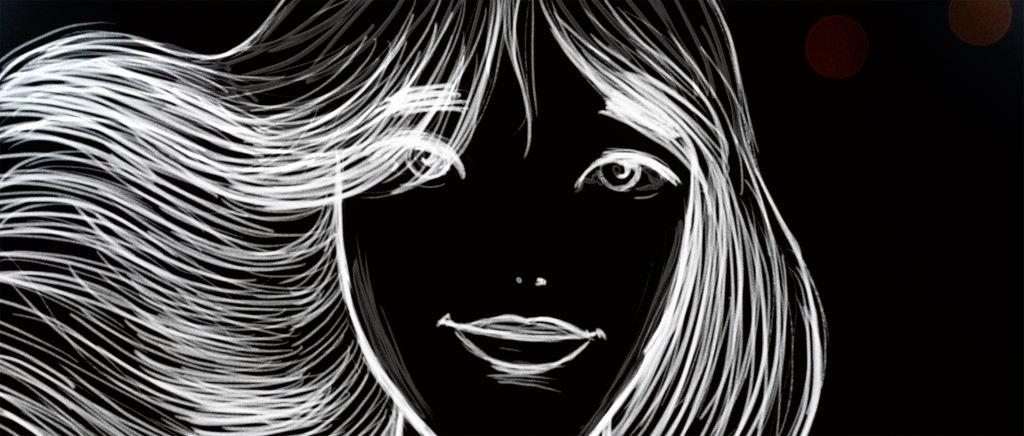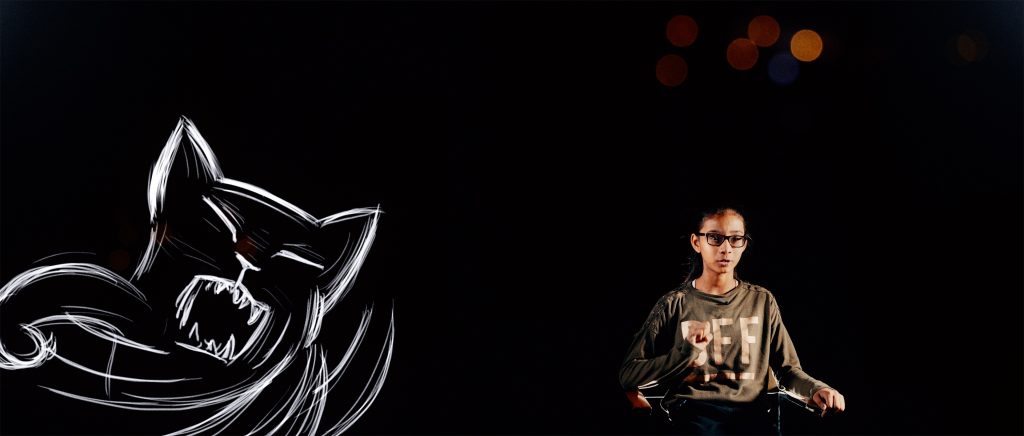
In the short documentary, Nobody’s Metaphor (2019), Chouette Films worked with Maslaha to capture the unfolding stories of a group of Muslim girls and young women of color who try out fencing and poetry workshops after school. These workshops, run by Maslaha, focus on challenging stereotypes that young women face and exploring their identities through the lens of intersectional feminism.
Although the combination of fencing and poetry may appear a strange and contrasting duo at first, as the girls start to develop their own unique and powerful fencing styles and voices, the brilliance behind this peculiar synergy of physical and communicative activities begins to shine out. Tackling the difficulties of standing up against stereotyping and discrimination from two very different angles, the fencing and poetry workshops create a refreshing and playful space for the girls to try out their own styles and gain confidence, “using their bodies as well as their minds,” as teacher Saimah points out. In workshop participant Lana’s words, fencing is about “breaking stereotypes, having fun, not caring what other people thought and poetry is like the same. You don’t care what people think, you just write down whatever you’re thinking.”

So, where does animation come into this? With reels of beautiful and lively footage of the girls fencing, playing and reading each other their poetry, there was no desperate need to create more visuals to fill out the film. However, throughout filming and post-production, the question kept arising: what visuals should accompany the young participants reading out their own completed poems? Because these poems were the girls’ creative opportunity to take apart all the stereotypes and prejudices that others in society had labelled them with and redefine their own identities in their own words, they called for a special place in the documentary. Animation seemed to promise a worthy and poignant accompaniment, illustrating the words and metaphors of the poems whilst they were being spoken. This animation needed to be artistic and fluid enough to ignite the imaginations of the viewers and enhance the voice of the poet, whilst being subtle and gentle enough not to distract from it.
The animation phase of the post-production did pose some extra challenges, especially because it was necessary for the animator to work remotely. Because the animation needed to be woven seamlessly into both the words of the poems and the surrounding footage of the documentary, close collaboration and communication between the animator, the editor and the rest of the team was vital. Without the option of face to face interaction, relying on email and other indirect methods of contact always slows the conversation down. On top of this, for the animator, Abbas Abbasi Vazin, alongside a number of other people involved in making the film, English is not their first language. Therefore, careful translations were crucial to ensure that all the details of the poems carried through and were given life to in the drawings. The animator’s unique and artistic style meant that he was the perfect fit for the role on the project of Nobody’s Metaphor and working together patiently through the hindrances of language barriers and collaborating at a distance, it is undeniable that the enchanting results were well worth the challenges.
The animation itself was designed to overlay onto the footage of the girls reciting their poems, swirling and unfolding around them as they speak, as though bringing their metaphors to life. In this way, the animation creates a visual space of imagination around the speaker’s face, literally animating the ideas and thoughts that they are expressing. To create this effect, the style of drawing was key. The images needed to flow like a constantly changing doodle which plays out the story of the poem. In rhythm with the poet’s voice, the sketches almost appear to be drawn with the brushstrokes of the poet’s own creative imagination. For example, the stunning line of Hafsa’s poem, “You just see my hijab. You don’t see it as a pair of butterfly wings, ready to open up the grand windows of my soul, but I am a young lioness” is accompanied by an illustration of a young girl wearing a hijab which morphs into a butterfly and then evolves into a lioness.

But, let us not forget about the pivotal role of the fencing workshops. As a sport that is typically thought of as elitist and exclusively to be played by white males of a high status, fencing comes laden with its own prejudices. So, while the girls are learning to build up their strength in a new sport, they are also breaking down the stereotypical assumption that women, women of color and Muslims do not fence. Lucy, the fencing coach, emphasizes the importance of “breaking the rules”. To be great at fencing you do not need to follow a pre-determined technique. On the contrary, if you play to your own strengths and weaknesses and embrace your individuality, you will become unpredictable and powerful. As Hafsa explains, “You can add your own pizzazz and style into fencing.”
Likewise, literature’s history of canonical poets is dominated by white males, marking out poetry as an elitist form of expression and communication, closed off to people of other genders and races. However, through the workshops, the girls enter the arena of poetry as a space for experimentation and freedom. As the poet and workshop leader Suhaiymah puts it, “if you can communicate and you have feelings, you’re well on your way to being a poet.”
So, whilst the girls are confronting society’s stereotypes and narrating their stories on their own terms, they are also breaking the assumed and traditional rules of fencing and poetry. Just like the animator’s scribbling, ever-morphing brushstrokes, poetry and fencing are means of communication for the girls. Voices, swords and paintbrushes are all tools for self-expression.
In the end, the animation has become one of the most admired features of the documentary and one of its most lively points of conversation and discussion. Identity should not be a burden that others label you with. It should not be a restriction nor an inhibitor. Identity should be something that you weave for yourself through your thoughts, words, and actions. It should be something unique to be proud of. As Hafsa declares in her poem, “I can choose what beauty means.” Like an animated drawing or a spoken poem, your identity is a deeply personal and beautiful creation. In Lana’s poetic words, “My life is a blank canvas and I am here to place it upon an easel and paint.”
Anna Sowa is a documentary film producer at Chouette Films and a Ph.D. by practice candidate at the London Film School/University of Exeter. Based at SOAS, University of London, Chouette Films fuses the worlds of academia and creativity. By harnessing the powerful and expressive language of film, Chouette Films draws stories from the world of academia and extends the reach of their impact to wider audiences. The vision of the enterprise is to amplify the voices of research projects and social ventures so that their unique and important stories are heard rather than being lost to gather dust on library shelves.
